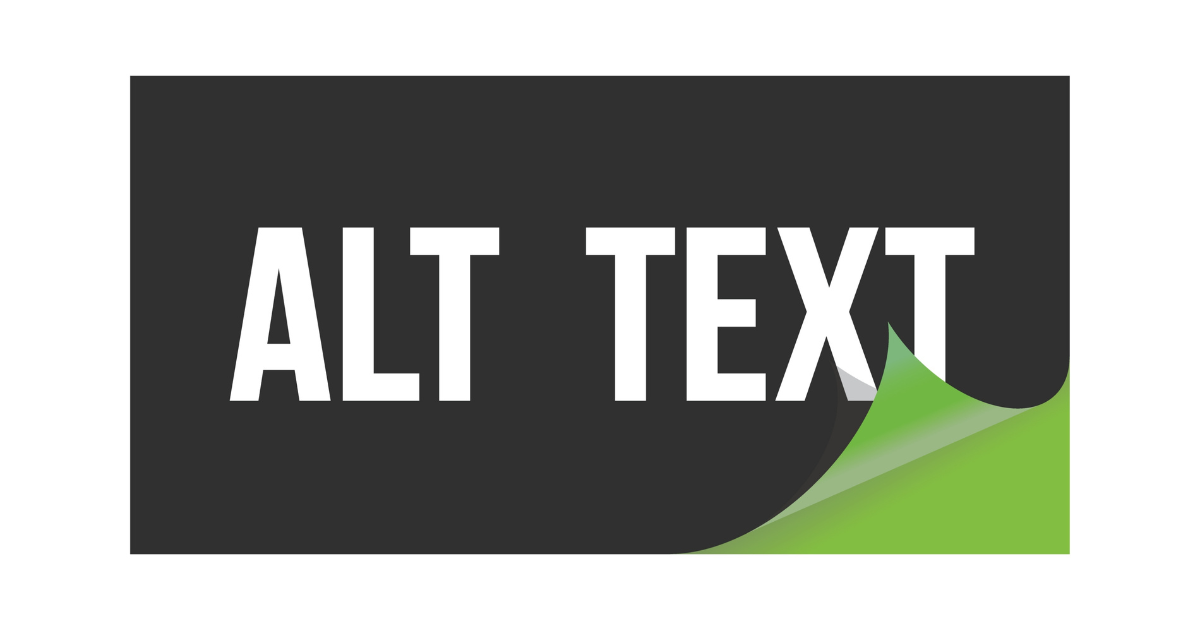Do you fully understand the SEO effects of “noindex” and when to use it?
Even if you are involved in website operation and SEO, it’s a matter of concern if your answer is “NO”.
This is because noindex can have a significant impact on websites and SEO, for better or for worse.
When used correctly, noindex can enhance the overall evaluation of a website, but using it incorrectly can quickly reduce traffic.
Therefore, in this article, we explain the following topics to help you use the noindex tag properly:
- What is noindex?
- SEO effects of noindex
- When to use noindex? Three major usage patterns
- Points to consider when using noindex
- How to set up noindex
- Frequently Asked Questions about noindex tag
When working on SEO, you will encounter situations where you wonder, “Should this page be set to noindex?”
Let’s read this article to be prepared to use noindex without hesitation.
Table of contents
What is Noindex?: A Tag that Instructs Not to Display a Page in Search Results
Noindex (pronounced as “no index”) is a meta tag that instructs crawlers not to index specific pages on a website.
In simple terms, it’s a tag used to tell Google, “I don’t want this page to appear in search results!”
When you set noindex, the page is completely removed from search results, so no matter what keywords are searched, that page will not appear.
There are generally three processes before search rankings are determined, but the noindex tag blocks the process after “2. Indexing”.
- Crawling: Search engine crawling
- Indexing: Registration in the search engine’s database
- Ranking: Display of search results
Noindex differs from physically removing pages from a website.
With noindex, it’s possible to keep pages on the site while not displaying them in search results.
Difference from Nofollow
One tag that is often confused with noindex is “nofollow”.
Nofollow is a tag used to tell search engines, “Do not follow this link” or “This page and the linked page are not related”.
- Noindex Tag: Prevents web pages from being indexed by search engines
- Nofollow Tag: Prevents crawling of links within web pages and does not pass SEO value
Normally, links within pages pass SEO value (link juice) to the linked pages.
This is because search engines associate the website with the linked page.
However, when a nofollow tag is placed, the association between the website and the linked page is not made, so SEO value is not passed to the linked page.
※Nofollow is not an instruction that crawlers must absolutely follow; it is treated as a hint.
Reference: Evolving Nofollow – New Ways to Identify the Nature of Links | Google Search Central Blog
We have explained the SEO effects and usage of the nofollow tag in the following article.
If you want to know more, please check it out together.
What is the nofollow attribute? Introducing the relationship between correct writing methods and SEO -webma-
The SEO Effect of noindex
Pages with noindex set will not be considered for evaluation by Google.
During an English office hour in 2017, Google employee John Mueller stated, “We don’t look at things that aren’t indexed.”
We only focus on indexed content. We don’t look at things that aren’t indexed.
Because if it’s not showing up in search, then it’s something we probably don’t care about. If you own a website and you notice that there’s low-quality content somewhere on your site, I’d really recommend working to improve the quality of that content first. And if you can’t do that, for whatever reason (maybe you have too much content, maybe it’s user-generated content or something like that), it’s possible to use a noindex for the time being to kind of keep it out of the overall evaluation of your website.Source: English Google Webmaster Central office-hours hangout – YouTube – 2017/06/30
Thus, “noindex pages” do not affect the evaluation of the site.
If there are obviously low-quality contents within the site, preventing them from being indexed using noindex can prevent negative impacts on the overall evaluation of the site.
The Goal is to “Improve the Overall Quality of the Site”
In the context of SEO, the noindex tag is used to improve the overall evaluation of the site or prevent negative evaluations of the entire site.
This is because simply having content within the site considered “low quality” can potentially lower the evaluation of the entire website.
Google states the following on their official page:
If a website contains low-quality content, it may impact the rankings of the entire site.
Google’s other specific guidance explains that by removing low-quality pages, integrating or improving thin content pages into useful ones, or moving low-quality pages to another domain, the quality of the content may improve and the ranking may increase.Source: Guidance on how to create high-quality sites | Google Search Central Blog
Therefore, by properly using the noindex tag, you can avoid being dragged down by low-quality pages and potentially increase the ranking of each page.
However, indiscriminate use of noindex carries significant risks.
Let’s make sure to carefully review the “usage patterns of noindex” introduced in the next chapter and the “points to note when using noindex” introduced in the previous chapter.
When to Use noindex? 3 Major Usage Patterns
So, when should we use noindex?
In our company, we divide the pages that should use noindex into the following three major patterns:
- Pages that should only be seen by specific individuals
- Pages that do not require search traffic
- Pages considered low quality or duplicate
We will explain each with specific examples.
1.Pages that Should Only Be Viewed by Specific People
For pages that should only be viewed by specific individuals, set them to noindex.
For example, the following pages fall into this category:
- Administration screens and login pages
- Test pages
- Pages not publicly accessible (such as member-only pages)
Administration screens are pages that are not necessary for anyone other than site administrators to view.
Moreover, if external individuals can easily access administration screens or login pages, it can lead to security issues.
※ Please rest assured that WordPress login pages are usually automatically set to noindex.
Also, test pages and pages under editing should be set to noindex since they are not intended for general users to view.
For pages like these where you do not want them to appear in search results but don’t mind if users access them via direct links, set them to noindex.
2.Pages Unnecessary for Search Traffic
Set pages unnecessary for access via search engines to noindex.
For example, these pages include:
- Thank you pages
- Landing pages or campaign pages designed solely for advertising purposes (pages where search traffic is to be excluded)
A thank you page is a page that displays “Thank you for your purchase” after a product purchase.
Since it is not expected for users to directly land on the thank you page from search results, there is no need to index it.
If the thank you page is used for measuring conversions (CV), the presence of search traffic may distort the data.
Pages dedicated to advertising operations are also similar.
If you want to exclude traffic from search engines, set them to noindex.
3.Pages Considered Low Quality or Duplicate
From an SEO perspective, “low-quality content” and “duplicate content” require noindex handling.
Low-quality content refers to pages that Google considers to have low quality, offering no value to search users, as the name suggests.
Duplicate content refers to pages whose content is almost identical to other pages within or outside the site.
Both may affect the evaluation and search performance of the site.
Specifically, pages like the following should consider noindex settings for “low-quality content” and “duplicate content”:
- Pages with minimal main content generated automatically by the system (such as product listing pages where no products are displayed)
- Site search result pages (especially those with 0 results)
- Pages with content almost identical or similar to other pages (such as author archive pages for single-person-operated blogs)
- Other pages that do not provide value to search users, pages with extremely low-quality content with little information, pages you do not want Google to evaluate
For example, a page with “0 results” from site search informs users that there are no pages related to the keyword, making it necessary for the site.
However, since it has minimal main content, even if it appears in search results, it does not provide value to users who visit via search.
Therefore, it cannot be considered of high quality.
If all such pages are subject to evaluation by Google, the site may be evaluated as having “many low-quality pages with thin content,” potentially decreasing the overall value of the site.
Therefore, consider using noindex to prevent evaluation by Google.
However, a little caution is needed for noindex handling of duplicate content.
Since the points to note are summarized in the next chapter, be sure to check them as well.
For those who want to know more about what constitutes “low-quality content,” please refer to the following article:
What is Low-Quality Content? Explanation of Google’s Definition, Impact on SEO, and How to Distinguish – webma –
Points to Note When Using noindex
When using the noindex tag, there is a risk of a drastic decrease in site traffic if used incorrectly or misconfigured.
It is important to use it carefully considering the following two points:
- Point 1. Do not place noindex on important pages (such as category pages).
- Point 2. It is not always appropriate as a solution for duplicate content.
Let’s explain each in detail.
1. Do Not Place noindex on Important Pages (Such as Category Pages)
It goes without saying that noindex should not be used on important pages.
Important pages include:
- Pages that gather a lot of traffic
- Pages that acquire backlinks
- Pages with internal links
These refer to pages that are important for SEO.
Sometimes you may come across advice like “place noindex on category pages,” but caution is needed with this advice.
Category pages, being pages that bundle each page with internal links, also receive high evaluation from Google.
Let’s give some examples of pages that should not be set to noindex.
In a media site, if there is a category page with abundant content, setting it to noindex may lower the evaluation of individual pages.
This is because setting it to noindex reduces the link juice passed to individual pages.
Also, it’s very wasteful to set category pages that can target top positions, such as “List of Achievements,” “Case Studies,” and “List of Materials,” to noindex.
In the case of a fashion e-commerce site, there may already be category pages like “T-shirts” and “Sneakers” displayed at the top and collecting a lot of traffic daily.
Without checking the performance of such pages, setting noindex based solely on “because it’s a category page” can lead to a decrease in traffic and have a negative impact.
Since the situation varies for each site, it is important to thoroughly assess whether “noindex is really necessary for this page” and then install the noindex tag.
2. Not Always Suitable as a Solution for Duplicate Content
From an SEO perspective, it is desirable to eliminate duplicates when duplicate content is found.
However, using noindex to eliminate duplicates is not always the correct solution.
Using noindex will completely remove the evaluation from Google, so other methods should be prioritized first.
Google’s John Mueller recommends addressing duplicates with the “canonical tag” when duplicate content exists.
Generally, instead of using noindex for duplicate content, it is recommended to use rel=”canonical”. Using noindex would tell us “this page shouldn’t be indexed at all”, whereas with canonical, it would tell us “this page is essentially the same as this other page”. That way, we can consolidate all signals from both pages. On the other hand, if we block them with noindex or robots.txt, then essentially all signals about those pages would be lost.
Source: English Google Webmaster Central office-hours hangout – YouTube – 2018/04/03
※Includes a partial paraphrase of the translated content by our company.
A tag used to inform Google of the URL of the canonical page that you want to evaluate when there is duplicate content.
Therefore, if you are confident that “it’s okay for the page’s evaluation to be completely ignored,” you can use noindex to deal with duplicate content.
For example, if you’ve written articles with the same content in the past but haven’t been evaluated at all, or if it’s pages with the same content just filtered by parameters.
However, if you want to inherit evaluations even a little, such as having backlinks, consider using canonical tags or other duplicate content resolution methods.
How to set up noindex
Here are two typical methods for setting up noindex.
- Method 1. Setting up with meta tags
- Method 2. Setting up with WordPress plugins
Choose one of the implementation methods depending on your site’s situation.
1. Setting up with meta tags
To add noindex to the HTML of the page you want, simply insert the following meta tag into the <head> section:
<meta name=”robots” content=”noindex”>
To confirm if it’s implemented correctly, follow these steps:
- Right-click on the target page while opened in Chrome
- Click on “View Page Source”
- Search for “noindex” using Command + F, and if the above description is present, it’s okay
For more details on implementing noindex, refer to Google’s official help page.
Block indexing with noindex | Google Search Central
2. Setting up with WordPress plugins
If you’re running a website using WordPress, it’s easy to set up with plugins.
With many SEO plugins like “Yoast” or “All in One SEO Pack,” you can set up noindex by simply checking a checkbox or selecting from a dropdown.
Below is the section for setting noindex displayed at the bottom of the “Yoast” post screen.
By selecting “No” for the item “Allow search engines to show this post in search results?” at the bottom of the post screen, noindex will be applied.
Frequently Asked Questions about the noindex tag
Finally, let’s answer four common questions about noindex.
- Question 1. How to confirm if noindex is correctly processed?
- Question 2. Noindex doesn’t seem to work! How long does it take to reflect?
- Question 3. What happens if I keep applying noindex? Will it be indexed if removed?
- Question 4. What is the difference between robots.txt and noindex?
1. How to confirm if noindex is correctly processed?
Google Search Console allows you to check if Google recognizes noindex.
By clicking on “Index” → “Coverage” → “Excluded” in the left side of the admin screen, you’ll see the item “Excluded by noindex tag.”
Clicking here allows you to confirm all pages where the noindex tag is set.
Also, if you want to check only the indexing status of specific pages, you can use the “URL Inspection Tool” at the top of the Search Console’s admin screen by entering the target URL.
2. Noindex doesn’t seem to work!? How long does it take to reflect?
“Even though I set noindex, it’s not yet removed from search results.”
Sometimes there’s such concern, but understand that even if you set noindex, it won’t be immediately removed from the index.
Recognition of noindex occurs when Google’s crawler comes next.
Since the crawling frequency varies depending on the site, it’s not possible to say how long it will take to reflect.
In some cases, it may take up to a month.
In urgent cases, there’s a temporary measure of sending a “Removal Request” from Google Search Console (this is only a temporary solution).
Removals Tool and SafeSearch Report Tool – Search Console Help
What happens if you continue to apply noindex? Will it be indexed when removed?
If you continue to apply noindex for a long period, not only will the page not appear in search results, but Google will also stop following the links within that page (=nofollow).
In other words, eventually it will be treated the same as the following markup with the nofollow attribute:
<meta name=”robots” content=”noindex,nofollow”>
Reference: Google: Long Term Noindex Will Lead To Nofollow Also – Search Engine Roundtable
Even on pages where noindex is set, it is possible to reindex the page by removing noindex.
However, it tends to take some time for re-indexing.
If you want to index quickly, you can use the “URL Inspection Tool” in Google Search Console to request indexing registration.
What is the difference between robots.txt and noindex?
Robots.txt is often confused with noindex, but there are clear differences as follows:
| Differences between robots.txt and noindex | ||
| Crawl | Index | |
| robots.txt | Block | No guarantee of index removal |
| noindex | Implemented | Index removal |
Robots.txt disallow is used to block crawlers.
Although it may result in not being indexed by restricting crawler access, it should not be used for pages you do not want indexed.
This is because if the crawler’s traversal itself is blocked, even if the page has noindex set, the noindex will not be recognized.
Google also explains as follows:
Blocking Google from crawling a page may lead to that page being removed from Google’s index.
However, specifying a disallow in robots.txt does not guarantee that the page will not appear in results. Google may still show URLs from results based on external information such as reference links. To explicitly block a page from being indexed, use the noindex robots meta tag or the X-Robots-Tag HTTP header. In this case, do not disallow the page in robots.txt. The page must be crawled in order for the tag to be recognized and followed.
It is necessary to understand the differences and use them according to your purpose.
【Summary】Enhance the overall SEO evaluation of your site by using the noindex tag correctly!
The noindex tag instructs search engines not to display a page in search results.
If you want to avoid indexing a page or want it to be removed from the index, use the noindex tag.
By using the noindex tag correctly, you can improve the overall quality of your site and enhance its ranking.
First, check if there are any pages on your site that should use noindex among the three patterns introduced this time.
- Pages that should only be seen by specific individuals
- Pages that do not require search traffic
- Pages considered low-quality or duplicate pages
We at OurExScore support your SEO.
If you have any concerns about SEO, please feel free to contact us using the inquiry button below.




